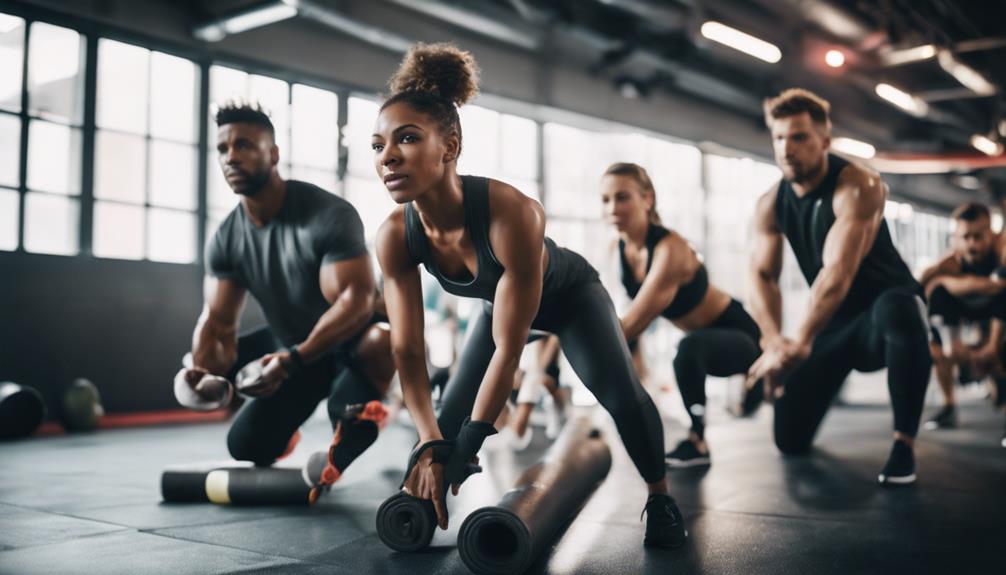Boxing is a demanding sport that requires not just technical skills but also significant physical fitness. Understanding how much exercise boxers need is crucial for their performance in the ring. The training regimens of boxers are designed to build endurance, strength, and agility, which are vital attributes for anyone looking to excel in boxing. This article delves into the multifaceted exercise needs of boxers, examining the various components that contribute to their overall fitness and performance.
The exercise requirements for boxers vary based on their level of experience, weight class, and individual goals. However, a general consensus exists regarding the need for a well-rounded training program that incorporates several key elements. By understanding the exercise demands of boxing, athletes can better prepare themselves for the rigors of competition and improve their skills effectively.
Understanding the Importance of Exercise for Boxers
Exercise is the cornerstone of a boxer’s training regimen. It not only enhances physical abilities but also plays a critical role in developing mental toughness, a key asset in the ring. Boxers face unique challenges during matches, requiring them to maintain peak physical condition and resilience. Regular exercise helps build the necessary stamina and strength to endure long training sessions and intense fights, ensuring they can perform at their best when it matters most.
Moreover, exercise contributes to weight management, an essential aspect of boxing. Fighters must often meet specific weight classes, and maintaining an optimal weight requires rigorous training. A well-structured exercise plan allows boxers to burn fat while building lean muscle mass, thus improving their overall performance and competitiveness.
Daily Training Regimen: Hours of Exercise Required
The daily training regimen for boxers typically involves a minimum of two to three hours of intense exercise. This time is usually divided among various training components, including cardio, strength training, and skill work. Many fighters dedicate their mornings to cardio workouts, which can include running, skipping rope, or cycling, followed by technical training in the afternoons. This routine helps to build endurance while sharpening their boxing skills simultaneously.
As a boxer progresses in their career, the volume and intensity of their training may increase. Elite boxers often train five to six days a week, committing upwards of 30 hours a week to ensure physical readiness for competitions. This requires not just physical stamina but also a high level of discipline and commitment to their training schedules.
The Role of Cardio in a Boxer’s Workout Routine
Cardiovascular fitness is vital for boxers, as it enhances endurance and allows them to maintain a high pace throughout rounds. Boxers typically include various forms of cardio in their routines, such as running, interval training, and high-intensity interval training (HIIT). These workouts increase heart rate and improve oxygen consumption, enabling them to recover quickly between rounds and maintain their energy levels during fights.
The goal of cardio for boxers is not only to improve their stamina but also to enhance their overall athletic performance. Effective cardio training can lead to better footwork, quicker recovery times, and improved resilience against fatigue. This aspect of training is crucial, as matches can be physically demanding, often requiring athletes to exert themselves for several minutes at a time.
Weight Training: Building Strength for Boxing Performance
Weight training is another critical component of a boxer’s exercise routine. It helps to build muscle strength and power, which are essential for delivering effective punches and withstanding the physical demands of boxing. Focused strength training exercises, such as deadlifts, squats, and bench presses, can significantly enhance a boxer’s performance in the ring by improving overall body mechanics and force generation.
Additionally, weight training helps to reduce the risk of injuries, which is paramount in a sport where physical contact is a fundamental aspect. Stronger muscles and connective tissues can better handle the stresses of training and competition, ensuring that athletes can train consistently without setbacks. A well-balanced approach to strength training also enables boxers to develop explosive power, crucial for executing quick and powerful strikes.
Sparring Sessions: Essential Practice for Boxers
Sparring is a fundamental part of a boxer’s training regimen, providing them with practical application of their skills in a controlled environment. During sparring sessions, boxers can test their techniques, timing, and strategies against live opponents, which is essential for preparing for actual fights. These sessions not only help refine their skills but also build mental resilience and adaptability, two qualities needed to succeed in the ring.
The frequency of sparring can vary, but boxers typically engage in sparring sessions a few times a week. The intensity of these sessions can also fluctuate, allowing fighters to practice both at full speed and in a more technical, controlled manner. This balance ensures that boxers can simulate fight conditions while also honing their skills without the risk of excessive injury.
Recovery and Rest: Balancing Exercise and Rest Days
Recovery is a vital component of any training program, and boxers must prioritize rest days to prevent overtraining and injury. Even though the training demands are high, giving the body adequate time to repair is essential for achieving peak performance. This includes proper sleep, hydration, and nutrition, all of which contribute to recovery.
Boxers often engage in active recovery on rest days, which may involve light activities such as walking, yoga, or stretching. This approach helps to maintain blood flow and flexibility while allowing the body to recuperate from intense workouts. Striking a balance between rigorous training and recovery can significantly enhance a boxer’s performance and longevity in the sport.
Nutrition’s Influence on a Boxer’s Exercise Needs
Nutrition plays an integral role in a boxer’s exercise routine, directly influencing their energy levels, recovery, and overall performance. A well-balanced diet that includes carbohydrates, proteins, and healthy fats is critical for meeting the energy demands of their rigorous training schedules. Proper nutrition also supports muscle recovery and repair, ensuring that boxers can train consistently and avoid fatigue.
Additionally, the timing of meals can affect a boxer’s performance during workouts and competitions. Consuming nutrient-dense foods before and after training can optimize energy levels and recovery, making it essential for boxers to work closely with nutritionists to tailor their diets according to their training regimens and specific goals. This attention to nutrition can significantly enhance their exercise effectiveness and competitiveness.
Tailoring Exercise Intensity to Skill Level and Goals
Every boxer has unique needs based on their skill level, experience, and individual goals. Beginners may focus more on fundamental techniques and basic fitness, while advanced fighters may engage in more intense workouts that combine various training elements. It is essential for boxers to assess their current skill levels and set realistic goals to ensure that their exercise routines are both effective and safe.
As boxers progress, they may require adjustments to their training intensity and volume. Those preparing for competitions need to ramp up their intensity to simulate fight conditions as closely as possible. Tailoring exercise intensity not only maximizes performance but also helps prevent injuries and ensures that boxers remain motivated throughout their training journeys.
In conclusion, the exercise needs of boxers are multifaceted and require a dedicated approach to training, nutrition, and recovery. Understanding the various components of a boxer’s training regimen—ranging from cardio to weight training, sparring, and nutrition—is crucial for achieving peak performance in the ring. By tailoring their exercise routines to individual skill levels and goals, boxers can optimize their training, enhance their physical capabilities, and ultimately succeed in this demanding sport.


